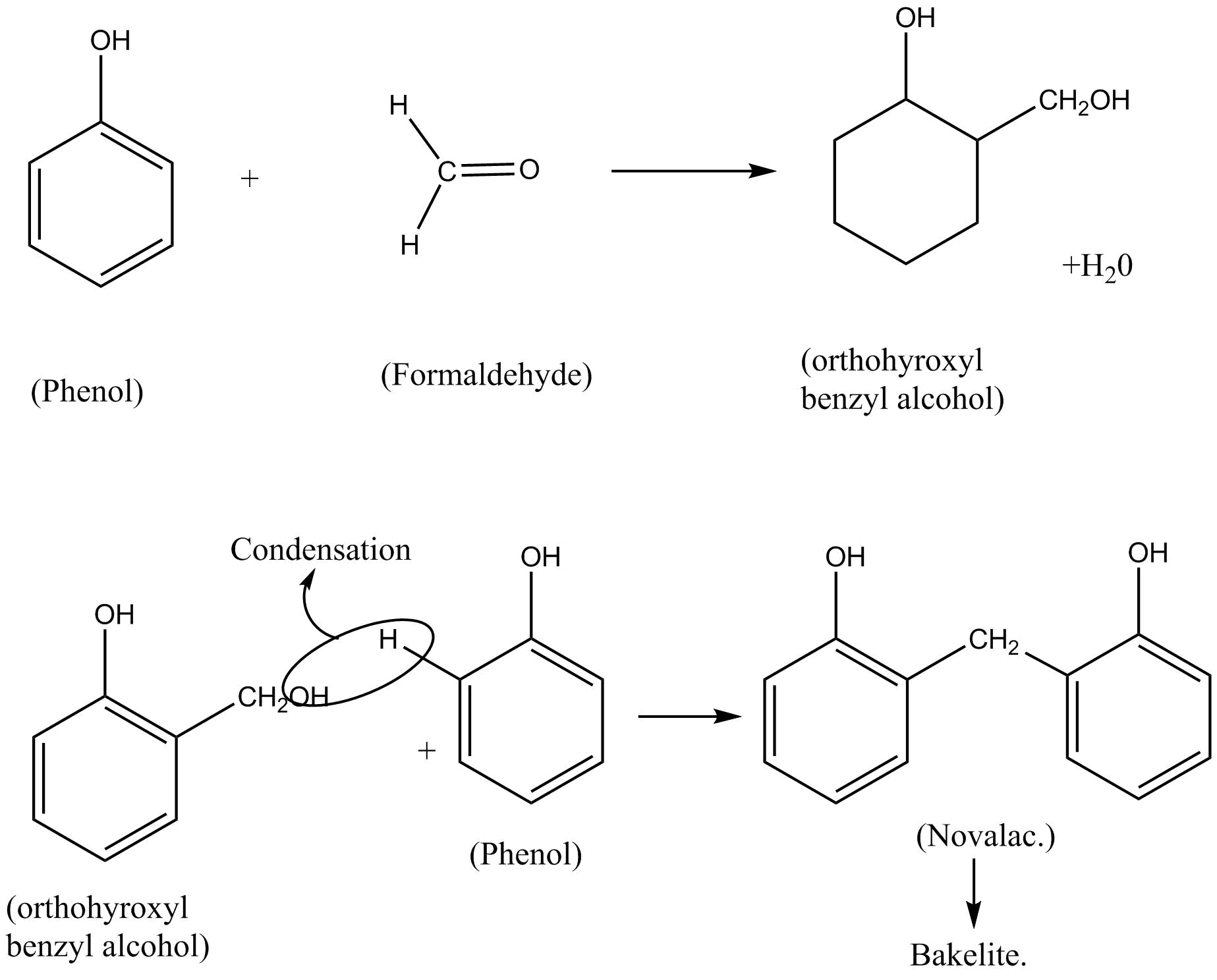
Thermosetting polymer, Bakelite is formed by the reaction of phenol with:
(A)
(B)
(C)
(D)
Answer
495.9k+ views
Hint:Thermosetting polymer is a cross-linked polymer which once heated gets hardened and can not be moulded again. This means that these polymers can’t be softened again on heating. Bakelite is a thermosetting plastic formed by condensation reaction of phenol and formaldehyde.
Complete step by step answer:
Bakelite is a thermosetting phenol formaldehyde resin. It is a polymer made up of two monomers that are phenol and formaldehyde
The reaction of phenol and formaldehyde have three main steps:
Step I – Reaction of phenol and formaldehyde to give ortho and para hydroxy benzyl alcohol.
Step II – Ortho hydroxybenzyl alcohol on removal of water molecules gives Novalac.
Step III – Novolac forms Bakelite.

Hence, the correct option is (C)
Additional information: Bakelite was developed by Leo Baekeland in
Bakelite is a smooth molding polymer, which gets molded very quickly. It is non – conductor of heat and electricity. Bakelite is a thermosetting polymer, so it retains its shape forever once molded. Handles of utensils are made up of bakelite so that the handles do not get deformed and do not harm the user.
Note:
The common catalysts used in production of bakelite are zinc chloride
General formula of bakelite is
Complete step by step answer:
Bakelite is a thermosetting phenol formaldehyde resin. It is a polymer made up of two monomers that are phenol and formaldehyde
The reaction of phenol and formaldehyde have three main steps:
Step I – Reaction of phenol and formaldehyde to give ortho and para hydroxy benzyl alcohol.
Step II – Ortho hydroxybenzyl alcohol on removal of water molecules gives Novalac.
Step III – Novolac forms Bakelite.

Hence, the correct option is (C)
Additional information: Bakelite was developed by Leo Baekeland in
Bakelite is a smooth molding polymer, which gets molded very quickly. It is non – conductor of heat and electricity. Bakelite is a thermosetting polymer, so it retains its shape forever once molded. Handles of utensils are made up of bakelite so that the handles do not get deformed and do not harm the user.
Note:
The common catalysts used in production of bakelite are zinc chloride
General formula of bakelite is
Recently Updated Pages
Master Class 4 Maths: Engaging Questions & Answers for Success

Master Class 4 English: Engaging Questions & Answers for Success

Master Class 4 Science: Engaging Questions & Answers for Success

Class 4 Question and Answer - Your Ultimate Solutions Guide

Master Class 11 Economics: Engaging Questions & Answers for Success

Master Class 11 Business Studies: Engaging Questions & Answers for Success

Trending doubts
Give 10 examples of unisexual and bisexual flowers

Draw a labelled sketch of the human eye class 12 physics CBSE

a Tabulate the differences in the characteristics of class 12 chemistry CBSE

Differentiate between homogeneous and heterogeneous class 12 chemistry CBSE

Why is the cell called the structural and functional class 12 biology CBSE

Differentiate between insitu conservation and exsitu class 12 biology CBSE




